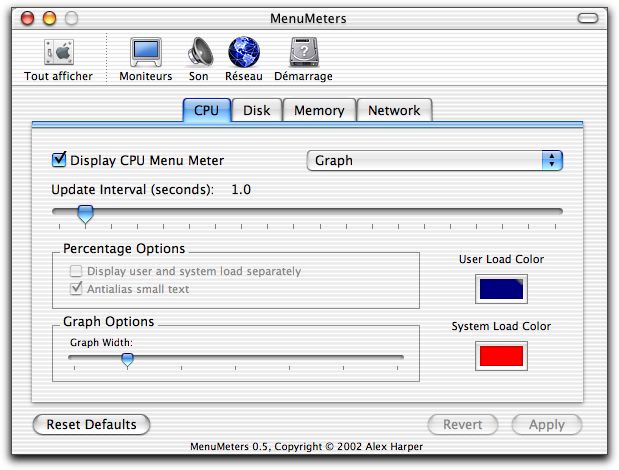

#MENUMETERS M1 SOFTWARE#
Professionally, I've also had a bit of a roller-coaster, working for a software defense contractor, a personal finance startup, a web application hosting startup, a personal media streaming startup, and then Cloud City Development since 2013. founding the non-profit Ruby Together, a 501(c)(6) trade association that funds open source development work to benefit all Ruby developers writing the third edition of The Ruby Way (because I loved the first edition, which I used to learn Ruby in 2003!) presenting around 25 talks at 36 events in 14 countries getting involved in open source in 2009 and ending up lead developer of Bundler, the Ruby language dependency manager Then I discovered Ruby on Rails in 2004 or so, and that led to lots of involvement in the Ruby community. I've loved the Ruby programming language ever since I discovered it in 2003. The site has been cited in a Maryland state judicial ruling, and was a top 5 finalist for the 2019 Webby Awards. It will settle whether a hot dog is a sandwich (no) and countless other food controversies. Probably.įor example, I artisanally hand-wrote all the HTML and CSS for The Cube Rule, a website that exists primarily make everyone who reads it astounded and/or enraged while remaining indisputably correct. As for what I do, uh, it's hard to pin down exactly but most of it could be called "web development". I spend too much time online, and I think that computers and programming are really neat. Then all I had to do was to, basically speaking, replace the occurrences of " NSMenuExtra" by " NSStatusItem", since the two APIs are almost the same.Hello! I'm André Arko, although I mostly go by on the internet. So, how did I port MenuMeters to El Capitan, then? Well, I just gave up having ⌘-dragging. In El Capitan, Apple added a more stringent check of the allowed NSMenuExtra's, and MenuCracker no longer works.

MenuCracker was an NSMenuExtra that pretended to be one of those allowed ones, which, once loaded inside SystemUIServer, removed these checks, so that more NSMenuExtras can be loaded without any problem. MenuMeters used this to inject their own NSMenuExtra's to SystemUIServer in fact MenuMeters' author is one of the main authors of MenuCracker.Įssentially, until Yosemite, SystemUIServer had a fixed list of allowed NSMenuExtras.
#MENUMETERS M1 CODE#
But until Yosemite, there was a known way to work around it, available as an open-source code as MenuCracker. But since 10.2, Apple had a code that blocked SystemUIServer to load non-system-provided NSMenuExtra's. In fact until and including OS X 10.1, Apple allowed it. But this happened later than the need to port MenuMeters to El Capitan 10.11.)Īnyway, due to this better behavior of NSMenuExtra's, people often wanted to write their own. (On macOS Sierra 10.12, Apple finally implemented and enabled ⌘-dragging for all NSStatusItem's, including this port of MenuMeters. I have no idea why ⌘-dragging was not provided for the latter by the system. One good thing about the former is that you can rearrange them by ⌘-dragging the menu items. The latter can be displayed by any app written by any developer. The former are loaded and displayed by SystemUIServer, a process provided by the system. There are in fact two types of such menu bar items, one known as NSMenuExtra's and another known as NSStatusItem's. As you very well know and is shown in the screenshot above, there can be various utilities put on the right hand side of the menu bar.


 0 kommentar(er)
0 kommentar(er)
